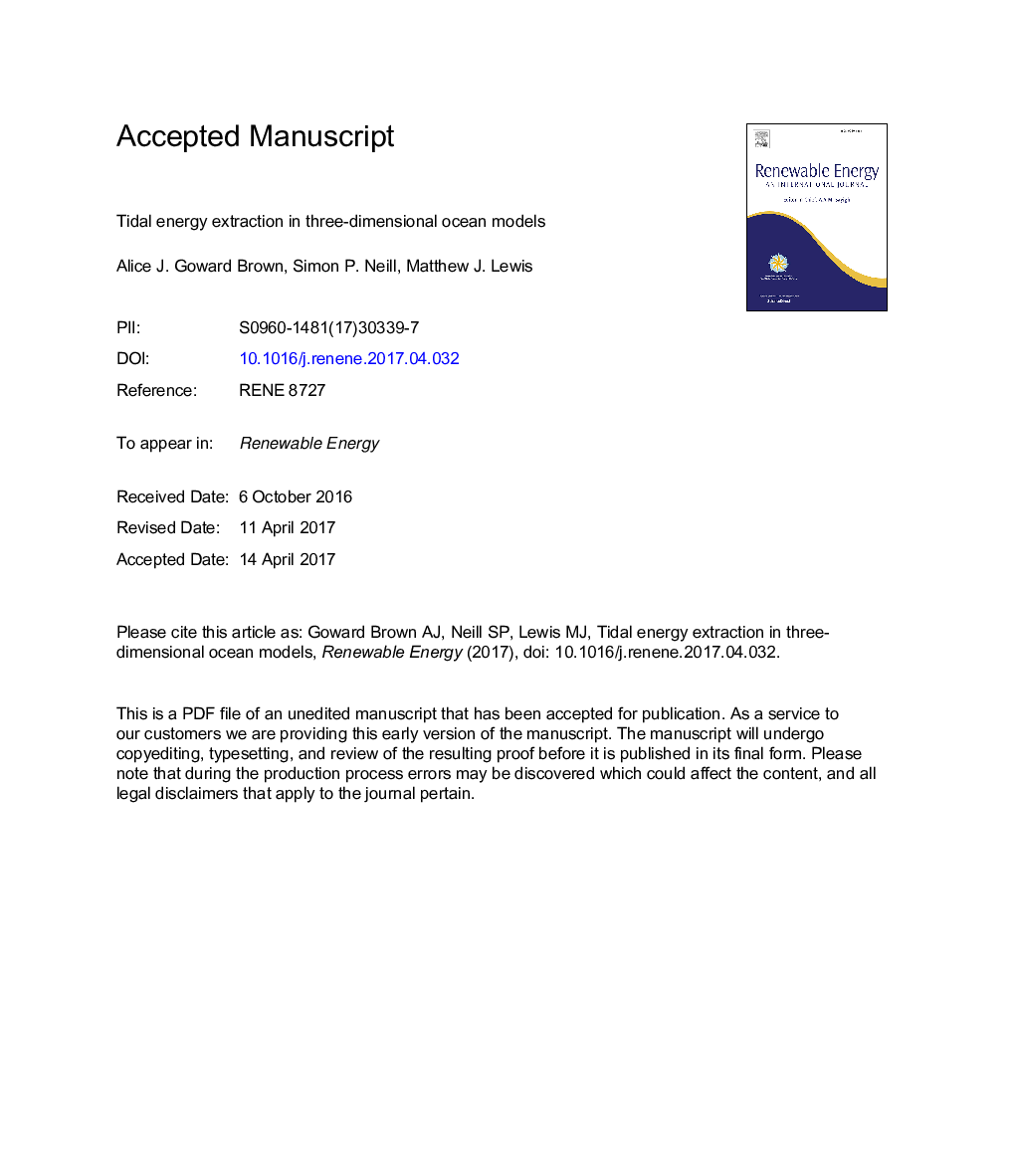| Article ID | Journal | Published Year | Pages | File Type |
|---|---|---|---|---|
| 4925974 | Renewable Energy | 2017 | 52 Pages |
Abstract
Access to high performance computing has made 3-D modelling de rigueur for tidal energy resource assessments. Advances in computing resources and numerical model codes have enabled high resolution 3-D ocean models to be applied at basin scales, albeit at a much higher computational cost than the traditional 2-D modelling approach. Here, a comparison between 2-D and 3-D tidal energy extraction modelling techniques is undertaken within a 3-D modelling framework, and differences between the methods are examined from both resource and impact assessment perspectives. Through a series of numerical experiments using the Regional Ocean Modeling System (ROMS), it is shown that 3-D tidal energy extraction can be successfully incorporated in a regional ocean model of the Pentland Firth - one of the top regions in the world for tidal stream energy development. We demonstrate that resolving 3-D flow is important for reducing uncertainty in environmental resource assessments. Further, our results show that 2-D tidal energy extraction methods lead to a misrepresentation of the velocity profile when applied to 3-D models, demonstrating the importance of resolving 3-D flows in the vicinity of tidal arrays.
Keywords
Related Topics
Physical Sciences and Engineering
Energy
Renewable Energy, Sustainability and the Environment
Authors
Alice J. Goward Brown, Simon P. Neill, Matthew J. Lewis,
